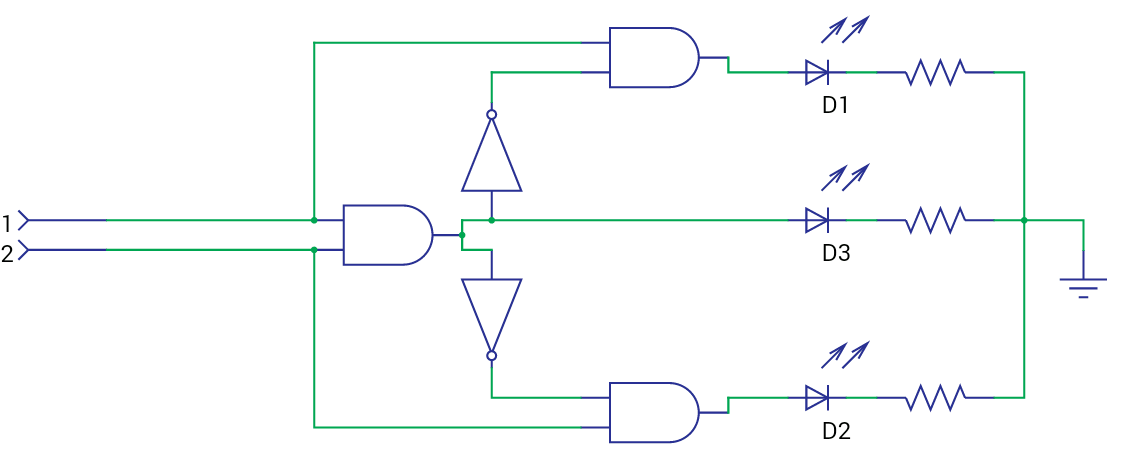I'm totally lost and I've got no idea what to search to help find this. Basically I have two inputs [A,B] Where A represents the number 1 and B represents the number 2. I'm trying to make it so when 1 is "on" It turns on a little LED, and when two is "on" it turns a seperate LED on. I've got that, but I want to add an AND gate to make it so when both are on it turns a new LED on and the other two turn off. I've tried using a XOR gate & and gate but it can't differentiate the two signals, [1,2] Hopefully I can finally understand this. I'm currently using Logism to make it easy to see and understand. Thanks.
3 Answers
A Simpler Way?
Given you haven't specified what rail the LEDs are connected to, it is actually possible to implement the solution showed by both @WhatRoughBeast and @RobhercKV5ROB (both are the same circuit effectively), using just three 2-input NAND gates:

simulate this circuit – Schematic created using CircuitLab
Basically the LEDs are wired up to act as inverters - if the output is high, then the LED is off. This allows all the gates to be transformed into NAND gates.
Fun facts:
This is also the most optimal way to design it using 7400/4000 series ICs (just one!).
It can also become the most optimal at the transistor level - by stripping away unused parts of the NAND gates, it could me made using just 5 NMOS transistors!
You can accomplish this easily with 3 AND gates & 2 inverters. Here's a schematic example:
The 3 AND gates turn on the LEDs. The 2 inverters turn off both the 'single' LEDs if the center 'dual' LED is lit due to 1=2=on
-
\$\begingroup\$ You beat me by 3 seconds. And mine is clearer. \$\endgroup\$ Commented Mar 6, 2016 at 3:39
-
\$\begingroup\$ @WhatRoughBeast yeah, I'm on my cell...no access to CircuitLab (& I'd have beaten you by 2 minutes if I didn't have to reboot the stinkin' thing to get the img to upload). \$\endgroup\$ Commented Mar 6, 2016 at 3:44
-
\$\begingroup\$ You do not need two inverters. Both of them are doing the same thing so one could be pulled out. \$\endgroup\$ Commented Mar 6, 2016 at 4:38


